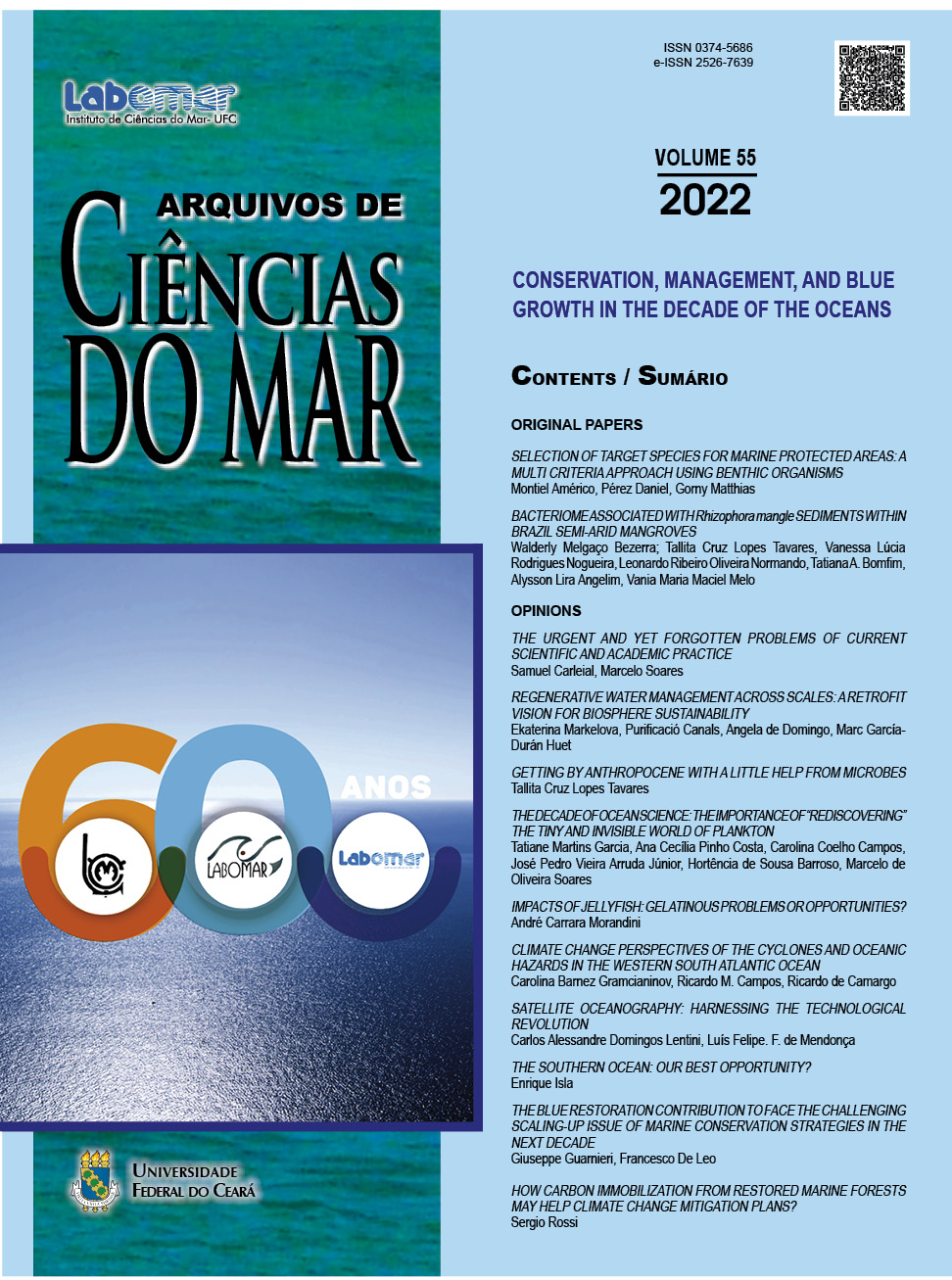GETTING BY ANTHROPOCENE WITH A LITTLE HELP FROM MICROBES
Passando pelo Antropoceno com uma pequena ajuda dos micróbios
DOI:
https://doi.org/10.32360/acmar.v55iEspecial.78213Resumo
Quando o homem moderno evoluiu na África há 250 mil anos como caçador-coletor, sonharia ele com megacidades e máquinas voadoras? Será que ele entenderia como nós conseguimos criar e expandir de forma tão intensa que isso poderia causar o nosso próprio declínio, como um Ícaro que atinge o Sol enquanto a cera de suas asas derrete? Atualmente, conforme encontramos mais e mais evidências dos impactos negativos que causamos à biosfera, também buscamos por soluções para escrever um futuro diferente, um futuro sustentável. Nessa perspectiva, eu apresento como uma abordagem microbicêntrica (centrada nos micro-organismos) pode ajudar a atingir muitos dos Objetivos de Desenvolvimento Sustentável (ODS) com base no conhecimento de que os micro-organismos são os motores da vida na Terra. A ciência da microbiologia mostrou que a maioria dos micro-organismos não é patogênica, mas vive em associação próxima com quase qualquer planta ou animal, com muitas vantagens que podem, certamente, ser utilizadas de modo baseado em evidências. Cada um dos 17 ODS pode ser fortalecido ao se considerar micro-organismos – desde melhorar ou restaurar a fertilidade do solo a produzir alimento e proteger os ecossistemas ligados ao carbono azul, como corais e manguezais. Reconhecer que esses seres minúsculos possuem uma das chaves para um futuro sustentável é essencial, o que pode ser atingido pelo fortalecimento da pesquisa, ações de letramento ou alfabetização microbiana e cooperação entre cientistas e outros atores, como tomadores de decisões e sociedade. Os micro-organismos podem nos ajudar a criar oportunidades para o futuro, como um Dédalo que finalmente é ouvido por um arrogante Ícaro.
Palavras-chave: Objetivos de Desenvolvimento Sustentável, bioeconomia, inovações microbianas, sustentabilidade, mudanças climáticas.
Downloads
Downloads
Publicado
Como Citar
Edição
Seção
Licença
1. Proposta de Política para Periódicos de Acesso Livre
Autores que publicam nesta revista concordam com os seguintes termos:
- Autores mantém os direitos autorais e concedem à revista o direito de primeira publicação, com o trabalho simultaneamente licenciado sob a Licença Creative Commons Attribution que permite o compartilhamento do trabalho com reconhecimento da autoria e publicação inicial nesta revista.
- Autores têm autorização para assumir contratos adicionais separadamente, para distribuição não-exclusiva da versão do trabalho publicada nesta revista (ex.: publicar em repositório institucional ou como capítulo de livro), com reconhecimento de autoria e publicação inicial nesta revista.
- Autores têm permissão e são estimulados a publicar e distribuir seu trabalho online (ex.: em repositórios institucionais ou na sua página pessoal) a qualquer ponto antes ou durante o processo editorial, já que isso pode gerar alterações produtivas, bem como aumentar o impacto e a citação do trabalho publicado (Veja O Efeito do Acesso Livre).

